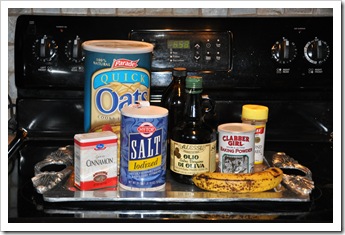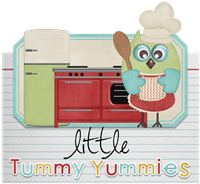Little Frances is currently gnawing on anything and everything she can get into her chubby little paws! I am at my Mom’s house for the holidays and, silly me, I forgot to bring her mesh teething bag so that she could gnaw on something that might add some vitamins to her diet. I thought it might be fun to look up recipes for teething biscuits, and I found this great recipe on WholesomeBabyfood.com. Luckily we already had all of the ingredients in my Mom’s kitchen so we decided to give it a try!
WARNING: Make sure watch your baby as they eat these! There is a risk of choking if you give them to your baby in anything other than bite sized pieces. We decided to give them to Little Frances whole, but we made sure to carefully watch her while she ate them.
Ingredients:
1 cup quick oats
1 cup ground oats (grind oats and make a coarse oat flour)
1/4 tsp salt
1/4 tsp cinnamon (or ginger or cardamom)
1/4 tsp nutmeg
1 tsp baking powder
1 cup (approximately 2) overripe bananas, mashed
1 tsp vanilla extract
3 tbsp oil of choice (I used olive since it’s the healthiest we had, I would not recommend using peanut oil as peanuts are a common allergen)
Steps:
- Preheat oven to 350 degrees.
- Grind 1 cup of oats in a chopper, blender, or small food processor
- Mix the oats, salt, cinnamon, nutmeg, and baking powder in a bowl
- Mix the bananas, vanilla extract, and oil in another bowl
- Add the wet ingredients to the dry ingredients and stir until well mixed
- Place approximately 1 tbsp on a baking sheet
- Bake for 12-15 minutes.
Yield: Approximately one dozen cookies depending on size.
Storage: This is not scientific fact, but I am going to freeze mine and I expect to use it within a month.
Epicutie Rating: Yummy in the Tummy! Little Frances loved these, and she quickly gobbled up two!
Difficulty: 1 out of 5 for me because my mom actually made them! ![]() However, I would say that it is a 4 out of 5 compared to most baby foods because there are several ingredients and it involves many more steps than most baby food.
However, I would say that it is a 4 out of 5 compared to most baby foods because there are several ingredients and it involves many more steps than most baby food.
















































